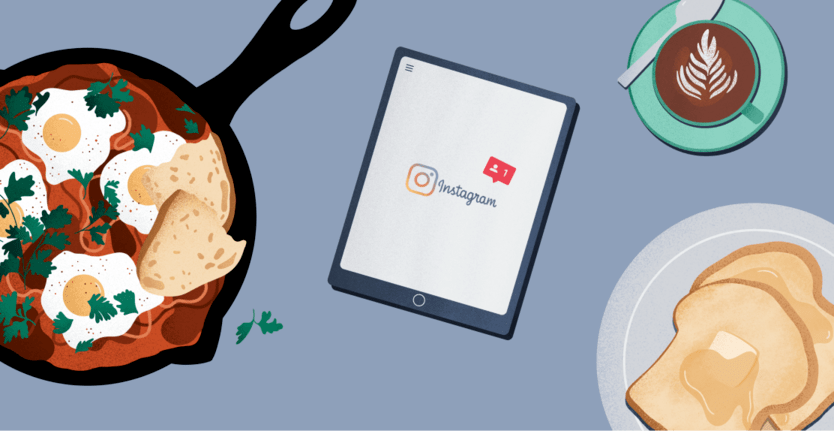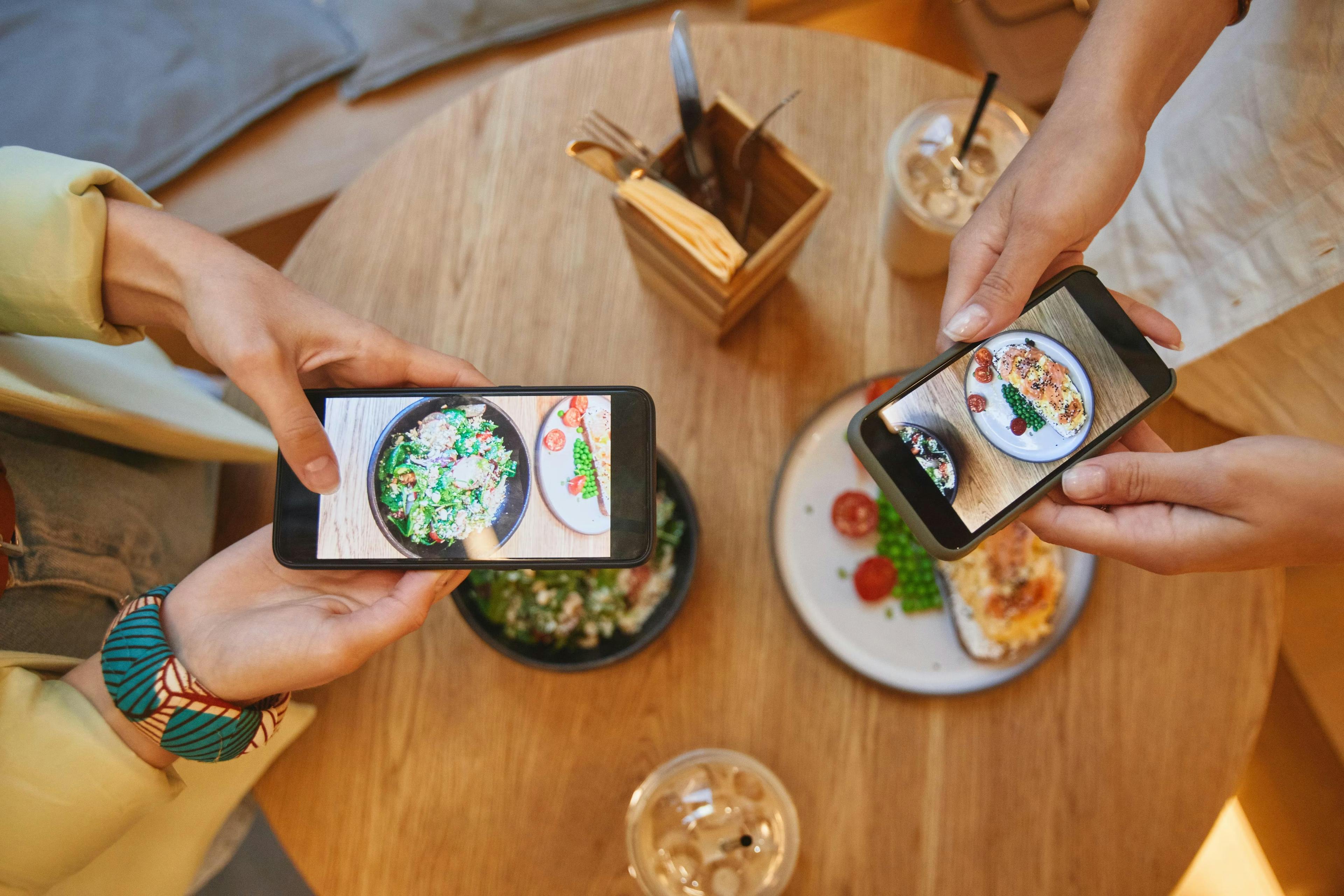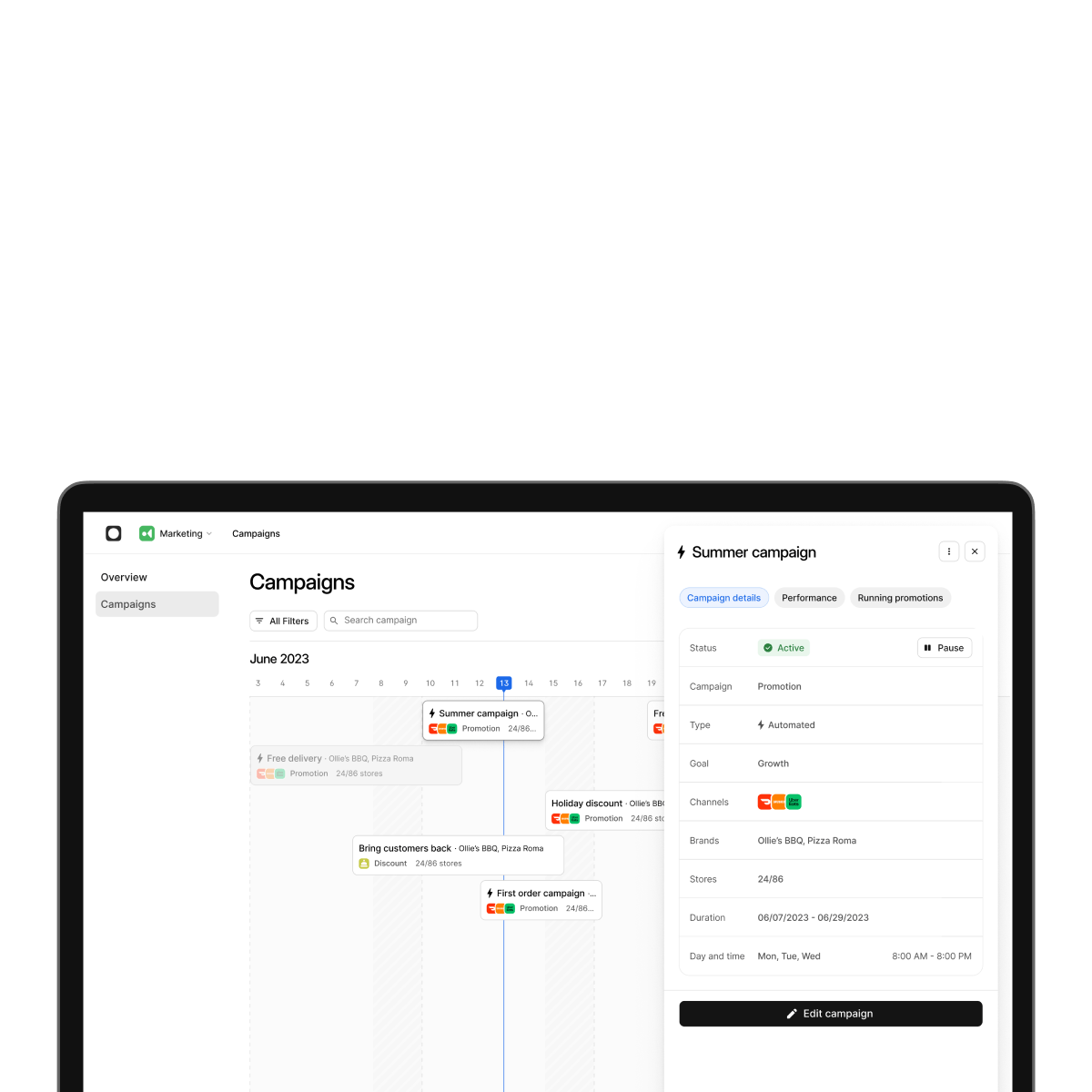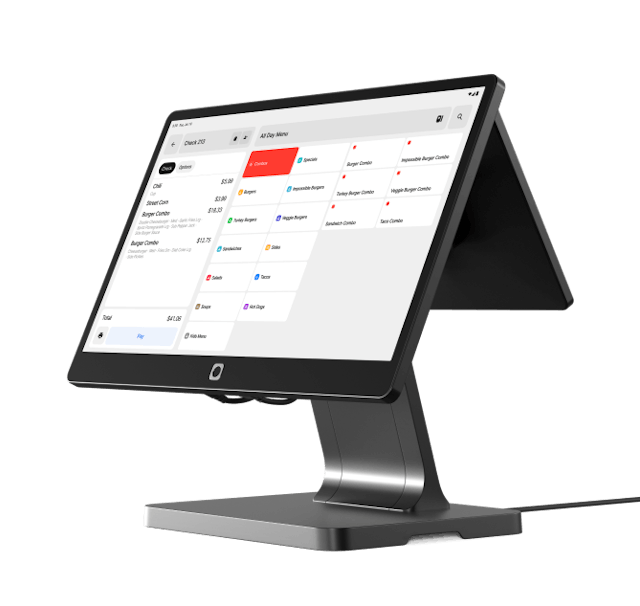
Table of contents
What is restaurant marketing?
Did you know that 90% of customers research a restaurant online before dining, more than any other business type? In today’s digital age, it’s never been more important for restaurants to prioritize their online presence to attract new customers, build community, and get more sales. But with the endless to-dos of running a restaurant, it can sometimes feel like there’s not enough time in the day to focus on marketing.
The goal of restaurant marketing is to attract and retain customers. We now know that customers spend a large portion of their lives online and even rely on reviews to make purchase decisions.
We usually think about promotions, food photography, and social media when we think about marketing. And while coming up with a branding strategy is essential for staying competitive, don’t overlook the easy changes you can make to ensure your online presence is up to date and complete. Good restaurant marketing starts with ensuring your restaurant is easily discoverable online with accurate resources (updated menu, times, links, and info) to get the most out of your marketing efforts.
We’ve compiled the ultimate checklist for restaurants looking to bulk up their digital presence in the following blog. Before getting into our free template, ideas, and best practices, let’s look at some stats.
When it comes to restaurant marketing, the numbers don’t lie
- 57% of guests view restaurant websites before selecting where to dine
- 71% of customers are more likely to recommend a restaurant if they’re responded to quickly on social media
- 92% of consumers read restaurant reviews
- 77% prefer peer reviews versus critic reviews
- 92% of restaurants are using Facebook for social media branding and marketing
- Nearly half of diners say they’ve tried a restaurant for the first time because of a social media post
Enhancing your restaurant's digital presence
These stats highlight that your customers’ opinions are primarily shaped online, and even more savvy competitors are taking advantage of social media to increase their reach. But wherever your restaurant is with its digital presence, there’s always room to improve and start getting more sales.
Our checklist gives you free tools, ideas, and best practices to enhance your marketing plan with ease! Fill out the form to download the list and see how many items you can check off today.

Marketing Checklist for Restaurants
1. Verify & Optimize Your Google Business Profile
- An optimized Google Business listing can garner 5× more views than an incomplete one.
- Update your name, address, phone (NAP), hours, menu, photos, and “from the business” descriptions.
- Use Google Posts for limited‑time offers, events, or new menu introductions.
- Add FAQs to answer common queries: “Is there parking?”, “Do you offer gluten-free/vegan?”, “Do you have outdoor seating?”, etc.
- Make sure your listing is consistent with other directories (Yelp, TripAdvisor, local guides) to avoid conflicting information (which hurts SEO).
2. Invest in a High-Performance, Conversion-Focused Website
- Your website should be mobile-first, fast loading, and optimized for local search (with schema markup, geo keywords).
- Incorporate direct online ordering and integrated POS/ordering flows to reduce reliance on third‑party apps.
- Use chatbots or live chat for instant support, reservation help, or menu questions.
- Update menus frequently (seasonally, special promos), and remove unavailable items promptly.
- Add trust signals: reviews, photos, staff stories, press mentions.
3. Adopt a Data & Personalization-Driven Mindset
- Leverage customer data (past orders, visit frequency, preferences) to segment your audience and deliver personalized offers.
- Use predictive analytics or AI to anticipate upsell opportunities (e.g. suggest trending sides or desserts).
- Automate personalized communications: birthday offers, re‑order reminders, loyalty rewards.
- Use A/B testing for marketing messages, creative, and calls to action to refine what works.
4. Build a Unified Omnichannel Presence
- Ensure brand consistency (tone, visuals, logo) across website, social media, emails, and delivery platforms.
- Create a connected loyalty or rewards program that works across multiple channels (in-store, online, app).
- Use cross-channel retargeting. If someone visits your menu but doesn’t order, send them a nudge via email or social ad.
5. Amplify User-Generated Content & Engagement
- Regularly search location tags, branded hashtags, and mentions. Repost customer photos/stories (give credit).
- Encourage customers to tag you with prompts (table cards, receipts, QR codes).
- Run “customer spotlight” or “fan of the week” features to incentivize tagging.
- Engage with commenters, thank people, answer questions; this strengthens community.
6. Plan Around Seasonal Moments
- Create a social content calendar with holidays, local events, and awareness days (e.g. Earth Day, Pride Month, local festivals).
- Build special campaigns around those days (discounts, themed menus, collaborations).
- Stay agile to jump on micro‑moments/trends (viral challenges, local news).
- Use geo‑targeted promotions to bring in diners during slow windows.
7. Collaborate Strategically with Influencers & Press
- Prioritize micro-influencers (1k–50k followers) since they tend to have higher engagement and lower rates.
- Offer complimentary experiences in exchange for coverage.
- Pitch local food bloggers, news outlets, and community media (press releases, media nights).
- Co-market with non-competitive local businesses (cafés, breweries, bakeries) for cross-promotions.
8. Expand Digital Menu Visibility Everywhere
- Make sure your menu is everywhere: Google Business, Instagram Highlights, Facebook, delivery apps.
- Use rich, interactive or dynamic menus to showcase specials, add-ons, cross-sells.
- Include photos and short descriptions to entice customers.
- Update for seasonal/limited-time items.
9. Double Down on Short-Form Video & Trend Content
- Reels, TikToks, YouTube Shorts remain high-impact content formats.
- Content ideas:
- Chef or owner intros (name, why you started, signature dish)
- Behind-the-scenes: assembling orders, plating, prepping
- Quick tips or hacks related to your cuisine
- Trend challenges, dances, or audio memes customized to your venue
- ASMR packaging or ingredient sounds
- Use trending audio (but adapt it to your brand).
- Use captions and subtitles (many watch without sound).
10. Publish Smartly
- Use analytics to find when your audience is most active (Instagram Insights, TikTok analytics).
- Start with known high-engagement windows (e.g. weekday mornings, lunchtime, evenings).
- Avoid dead windows where your audience is offline.
- Post steadily (3–5 times weekly) rather than sporadically.
- Recycle high-performing content with new angles.
11. Maintain Visual & Brand Consistency
- Define a brand style guide: colors, filters, fonts, tone of voice.
- Use consistent templates for posts, covers, stories.
- Invest in good food photography, natural lighting, clean backgrounds, and mouth-watering compositions.
- Use branded watermarks subtly if needed (without overwhelming the image).
- Update visuals seasonally to keep things fresh.
12. Offer Promotions, Bundles & Algorithm Boosts
- Run limited-time offers, bundles (e.g., “meal for two”), or free delivery windows.
- Promote deals via delivery apps (boosted listings, sponsored offers) to appear higher in rankings.
- Use social media ads or geo-targeted ads to push promotions locally.
- Use scarcity (“only 10 available”) to drive urgency.
13. Giveaways, Contests & Referral Campaigns
- Ask followers to tag friends, share your post, or repost to win free meals or vouchers.
- Use referral codes or “bring a friend” discounts to encourage word-of-mouth.
- Partner with local causes or charities so giving back becomes part of your brand story.
14. Incorporate Emerging Technologies & Trends
- Explore AR/VR experiences (e.g. AR filters, virtual restaurant tours).
- Use voice search optimization (people ask “restaurant near me open now”) by optimizing conversational keywords.
- Experiment with AI for captions, menu copy, content ideation, image generation.
- Consider dynamic pricing or daypart-based pricing models (adjusting prices by time or demand), some chains are already exploring this.
- Enable contactless dining, QR menus, and touchless ordering when in-house.
15. Track KPIs, Analyze, & Iterate
- Monitor key metrics: website traffic, conversion rate (orders/reservations), social engagement, open/click rates, ROI of ad spend.
- Regularly audit performance monthly, quarterly.
- Remove or pivot underperforming tactics.
- Reinforce and scale what works.
16. Leverage Reputation Management & Reviews
- Respond to all reviews (positive and negative) promptly and professionally.
- Use review prompts (post-checkout, emails) to gently encourage satisfied customers to leave feedback.
- Showcase testimonials on your website or in social media.
- Use review insights to improve service, menu items, or customer experience.
17. Foster Community & Local Partnerships
- Sponsor or participate in local events, markets, or pop-ups.
- Host cook-alongs, tasting nights, or collaboration dinners with neighborhood businesses.
- Engage in local causes or charities and highlight that in your marketing (social responsibility sells).
- Cross-promote with local businesses (e.g. offering combo deals or discounts with non-competitive partners).
Frequently Asked Questions

Q: Why does a restaurant need a marketing checklist?
A: A checklist helps you organize and systematize all your marketing tasks — from social media posts and email campaigns to local SEO and promotional events. It ensures nothing falls through the cracks and keeps your efforts consistent and focused.
Q: How often should I review or update my marketing checklist?
A: At least quarterly. The restaurant industry shifts fast: menu changes, consumer trends, holidays, local events, and competition all evolve. Regular check-ins (every 3 months or even monthly) help you stay current and effective.
Q: What is the most important marketing channel for restaurants today?
A: There’s no one-size-fits-all answer; the “most important” channel depends on your location, audience, and concept. But many restaurants find success through a strong combination of:
- Local SEO & Google My Business
- Food delivery/app presence (if applicable)
- Social media (especially Instagram, TikTok)
- Email or SMS marketing
The checklist helps you balance those channels rather than over-investing in just one.
Q: How do I track whether my marketing efforts are working?
A: Use metrics and KPIs. Some key indicators:
Website visits and conversions (reservations, online orders)
Social engagement (likes, shares, comments)
Open and click-through rates in email campaigns
Return on ad spend (ROAS) for paid campaigns
Customer feedback and reviews
Set realistic targets for each and measure regularly to see what’s working — and what needs adjustment.
Q: Should I try every marketing tactic in the checklist?
A: No. It’s not about doing everything. Use the checklist as a menu of options. Start with a few channels that make the most sense for your restaurant (budget, audience, capacity). As you see success or capacity grow, you can experiment with others.
Q: How do I stand out in a saturated market?
A: Differentiation comes from:
- A compelling brand story or voice
- Signature dishes or unique offerings
- Personalized experience or local community engagement
- Creative content (behind-the-scenes, chef stories, user-generated content)
Use your checklist to incorporate those differentiators into your campaigns.
Q: Can small restaurants with limited budgets compete with big chains in marketing?
A: Yes. In many ways, small restaurants have the advantage of flexibility and authenticity. Use the checklist to prioritize low-cost, high-impact tactics like:
- Engaging your local community
- Encouraging online reviews and word-of-mouth
- Leveraging social media stories and reels
- Building an email list
These often outperform big-budget tactics when done well.
Q: What should I do first if I don’t have a marketing plan at all?
A: Start with the essentials:
- Claim and optimize your Google My Business / local listing
- Set up your website or menu page with easy-to-use navigation
- Begin social media presence on one primary platform
- Start collecting emails or phone numbers for promotions
Use the checklist’s early “foundation” items to build momentum, then layer on more advanced tactics over time.

Otter POS for restaurants
The all-in-one platform that enhances operations across your entire business. Consolidate orders, increase sales, and make your days easier.

Book a demo to see how Otter’s all-in-one platform can help your restaurant thrive.